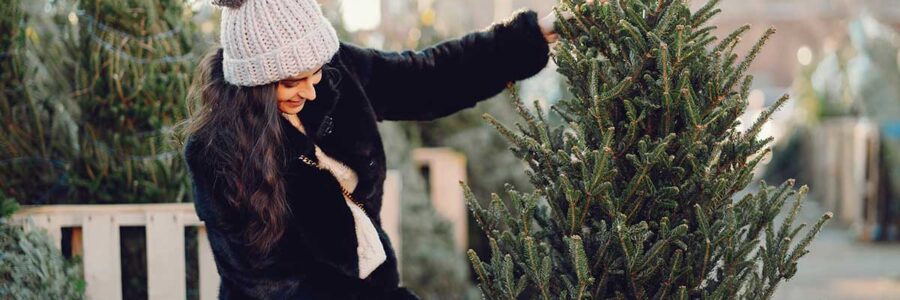The holiday season often brings the tradition of decorating Christmas trees into our homes. However, not all Christmas trees are equally safe for our health and the environment. This article delves into the concerns associated with conventional Christmas tree farming, particularly the use of harmful chemicals. It provides tips for selecting a non-toxic tree for a healthier, more eco-friendly holiday celebration.
The Concerns with Conventional Christmas Trees
Many commercially grown Christmas trees are cultivated in environments heavily reliant on chemicals like pesticides and fungicides to maintain their appearance.【1】 These substances, while effective for farming, can pose significant health risks, including lung and eye irritation, hormonal disruptions, and an increased risk of cancer.【2】【3】Bringing these trees into our homes potentially introduces toxic residues into our living spaces, affecting our family’s health.
Healthier Alternatives: Naturally Grown Christmas Trees
Fortunately, opting for a non-toxic Christmas tree doesn’t mean giving up the joy of a real tree. Naturally grown Christmas trees, cultivated without excessive harmful chemicals, are a safer choice. Selecting these trees reduces exposure to toxic substances and supports environmentally friendly farming practices.
Finding a Non-Toxic Christmas Tree
Locating a non-toxic Christmas tree might require extra effort but is beneficial for health and peace of mind. Contact local tree farms to inquire about their growing practices, focusing on natural or organic trees. These farms typically use minimal chemicals in their cultivation process. If local regulations permit, harvesting your Christmas tree can be a rewarding family experience. Check with local forestry departments for permits and guidelines for responsible tree harvesting.
The Experience of Harvesting Your Own Tree
Harvesting your own Christmas tree can create cherished family memories and connect you with nature. Ensure you have the necessary permit and understand local regulations for sustainable harvesting. Use appropriate tools to minimize environmental impact and follow ‘Leave No Trace’ principles.
Supporting Sustainable and Organic Tree Farms
Purchasing from sustainable and organic tree farms supports environmentally responsible farming practices. These farms use techniques like integrated pest management to reduce chemical use, focusing on soil and ecosystem health. Look for certifications or ask growers about their practices to find these farms.
Additional Tips for a Non-Toxic Holiday
To ensure a healthy and eco-friendly holiday season, consider using eco-friendly decorations like natural garlands, biodegradable ornaments, or energy-efficient LED lights. After the holidays, participate in tree recycling programs or replant potted trees to contribute to environmental sustainability.
Conclusion
Choosing a non-toxic Christmas tree is a step towards a more sustainable and healthy holiday season. It helps protect the environment and ensures family well-being by reducing exposure to harmful chemicals. By supporting eco-friendly practices, you contribute to a healthier planet.
References:
- Beyond Pesticides, “Christmas Trees and Pesticides,”www.beyondpesticides.org/programs/center-for-community-pesticide-and-alternatives-information/pesticide-free-holidays/christmas.
- Penn State Extension, “Potential Health Effects of Pesticides,”extension.psu.edu/potential-health-effects-of-pesticides.
- Mnif, Wissem, et al., “Effect of endocrine disruptor pesticides: a review,” International Journal of Environmental Research and Public Health,doi:10.3390/ijerph8062265.


